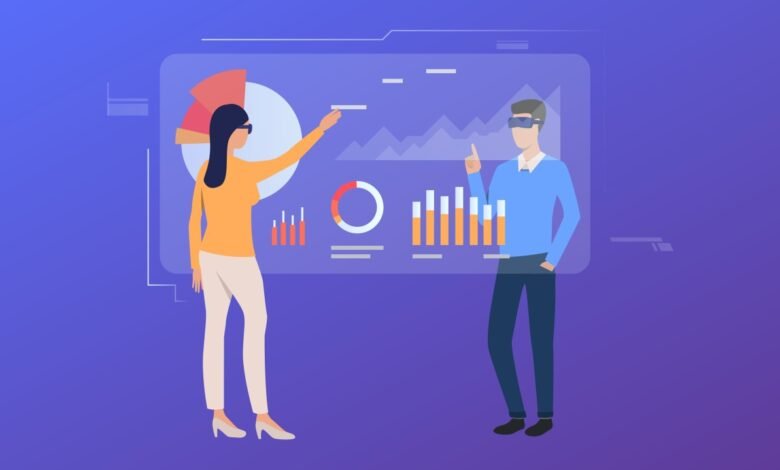How Retail Analytics Software Helps with Smarter Decisions

In a retail environment where margins are tight and competition is high, data is no longer a luxury—it’s a necessity. Business leaders can no longer afford to make decisions based solely on instincts or delayed reports. That’s where retail analytics software comes in.
When paired with employee monitoring software, retail analytics tools turn your daily operations into clear, actionable insights. They help managers make smarter, faster, and more confident decisions—about staffing, store layouts, sales tactics, and more.
Here’s how using retail analytics software leads to better decisions and stronger results, all without increasing overhead or adding complexity.
1. Understanding the Full Sales Story
Sales reports tell you what was sold, but not why it happened—or didn’t. By using retail analytics software, retailers can get:
- Conversion rates based on actual customer traffic
- Sales performance by employee, not just by store
- Time-of-day analysis to identify underperforming hours
With this level of insight, retailers can adjust marketing, promotions, or staffing in response to real patterns, not assumptions.
2. Smarter Staffing with Real Traffic Data
Overstaffing drains payroll. Understaffing hurts customer experience. Guessing is risky—but retail analytics software removes the guesswork by integrating traffic data.
Paired with employee monitoring software, these systems can:
- Show when customer-only traffic peaks
- Reveal how many sales reps are truly active at those times
- Guide scheduling to match demand, not assumptions
This leads to optimized staffing—better coverage with no payroll waste.
3. Improving Employee Performance with Clear Metrics
Not all performance issues are obvious. Some reps may appear busy but aren’t closing, while others may avoid peak shifts. That’s why rep-level insights matter.
Using employee monitoring software together with retail analytics allows managers to:
- Track idle vs. active time
- See average interaction length with customers
- Identify conversion gaps by employee
This data helps coach reps with specifics, recognize top performers, and close skill gaps—quickly and fairly.
4. Identifying Missed Sales Opportunities
Every customer who enters a store without making a purchase represents a potential loss. But why did they leave?
Retail analytics software can help answer that by revealing:
- How many customers went unattended
- When stores had high traffic but low conversion
- Where reps were available but not engaging
With this data, managers can intervene in real time—or adjust strategies to ensure fewer opportunities are missed.
5. Enhancing Store-Level Visibility
Whether managing a single location or a chain of stores, real-time visibility is key to performance.
Retail analytics systems allow you to:
- Compare stores using standardized performance metrics
- Detect trends across regions, teams, or product lines
- Set benchmarks for consistency in execution
This visibility leads to smarter territory management, better support allocation, and faster identification of problems.
6. Supporting Proactive vs. Reactive Management
The best decisions happen before problems escalate. Retail analytics software sends real-time alerts when key thresholds are missed, such as:
- Low conversion during peak hours
- Excessive idle time during shifts
- High traffic with no corresponding sales uptick
Instead of reacting to weekly reports, managers can take immediate steps to correct behavior or address store conditions.
7. Making Data Easy to Understand and Act On
One reason many retail teams avoid data is because it’s often hard to interpret. However, modern retail analytics software is designed with simplicity in mind.
Features typically include:
- Visual dashboards
- Auto-generated summaries
- Custom alerts for key metrics
- Mobile access for field managers
This helps teams act on data instead of wasting time deciphering it.
Read Also: Why Every Interior Design Business Needs a Solid Visual Identity
8. Reducing Time Theft and Attendance Gaps
Employee monitoring software goes beyond productivity—it also supports operational compliance. It can:
- Eliminate buddy punching through facial recognition or GPS
- Track shift attendance accurately
- Align rep presence with customer flow
These insights ensure you’re only paying for time actually worked—and that customers are being supported at the right moments.
Conclusion: Better Data, Better Decisions
Retail success doesn’t come from working harder—it comes from working smarter. With retail analytics software and employee monitoring software, retailers get the insights they need to make smart, fast decisions every day.
From improving staffing and coaching reps to uncovering lost sales and fixing operational gaps, this technology transforms raw data into store-level action. And the results speak for themselves—more efficient teams, better customer experiences, and stronger profitability.
If you’re still relying on manual tracking or end-of-week summaries, it’s time to let your data work with you, not against you.
FAQs: Retail Analytics Software & Employee Monitoring Software
Q1: What’s the main advantage of retail analytics software over basic reports?
Retail analytics tools provide deeper insights by combining customer traffic, rep activity, and sales data. This gives context to performance and uncovers what traditional reports miss.
Q2: How does employee monitoring software help managers?
It tracks engagement, idle time, and attendance accuracy—allowing managers to coach with facts and recognize top performers based on behavior and outcomes.
Q3: Can these systems help reduce time theft?
Yes. With features like biometric clock-ins and real-time tracking, employee monitoring software helps eliminate buddy punching and ensures accurate labor logs.
Q4: Is this software easy to use for non-technical staff?
Modern platforms are built for usability, with visual dashboards, mobile access, and automated alerts—so store managers can act without needing deep tech skills.
Q5: How quickly can we expect results from implementing these tools?
Most retailers begin seeing measurable improvements in employee accountability, sales conversion, and schedule efficiency within the first 30–60 days.




